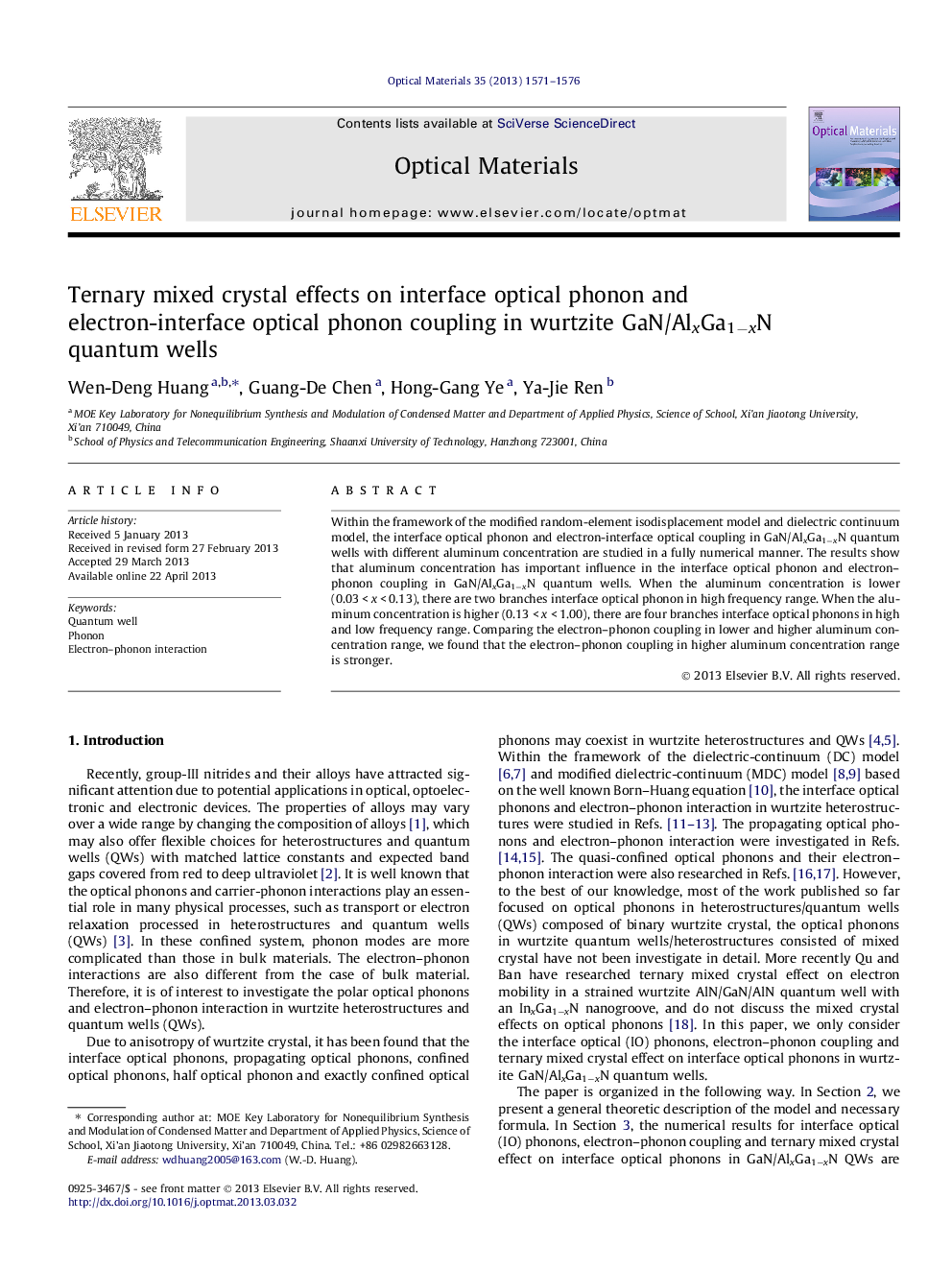| Article ID | Journal | Published Year | Pages | File Type |
|---|---|---|---|---|
| 1494279 | Optical Materials | 2013 | 6 Pages |
•IO branches are different with the increase of aluminum concentration.•IO phonons in high frequency range increase linearly.•IO phonons in low frequency range do not increase linearly.•The electron-IO phonon coupling in high frequency range increase linearly.•The electron-IO phonon coupling in higher aluminum concentration range is stronger.
Within the framework of the modified random-element isodisplacement model and dielectric continuum model, the interface optical phonon and electron-interface optical coupling in GaN/AlxGa1−xN quantum wells with different aluminum concentration are studied in a fully numerical manner. The results show that aluminum concentration has important influence in the interface optical phonon and electron–phonon coupling in GaN/AlxGa1−xN quantum wells. When the aluminum concentration is lower (0.03 < x < 0.13), there are two branches interface optical phonon in high frequency range. When the aluminum concentration is higher (0.13 < x < 1.00), there are four branches interface optical phonons in high and low frequency range. Comparing the electron–phonon coupling in lower and higher aluminum concentration range, we found that the electron–phonon coupling in higher aluminum concentration range is stronger.
Graphical abstractsThe effects of aluminum concentration (x) on dispersion curves of IO phonons for the a GaN QW of width d = 5 nm sandwiched between two semi-infinite AlxGa1−xN barrier layers (q⊥ = 0.20). Here (a) for 0.02 < x < 0.13 and (b) for 0.13 < x < 1.00.Figure optionsDownload full-size imageDownload high-quality image (37 K)Download as PowerPoint slide
